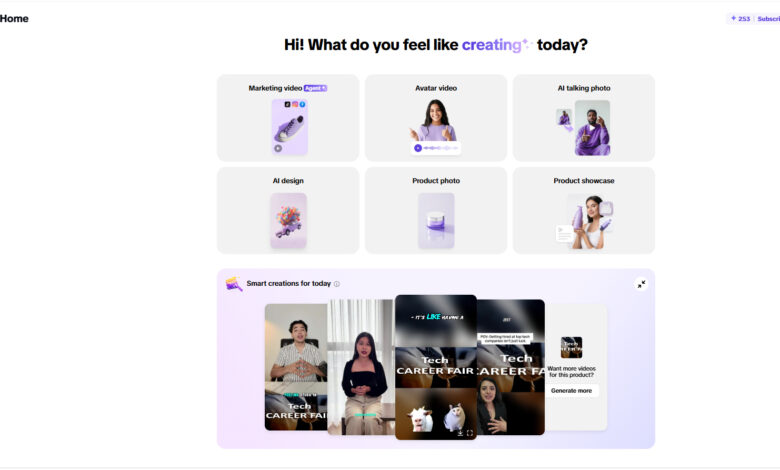Learning Made Catchy: Using an Effective Lyric Video Tool for Education and Language Practice

When a lesson is like a song, students tend to recall it. That’s the brilliance of making conventional teaching musical, visual, and rhythmic. Using a lyric video maker like Pippit, teachers and edtech developers can turn language exercises, history classes, and science facts into movie-like experiences that are nearer to a playlist than a presentation.
Suppose Spanish class is learned when fresh words dance across the screen to the beat of music. Or history class is learned when dates appear in chorus lines. Students aren’t hearing-they’re singing, reading, and committing facts to memory in a multi-sensory fashion.
Why lyrics unlock memory in education
Words get stickier when combined with rhythm. The brain loves patterns and beats better than plain lists of information, and that’s why students tend to remember a catchy tune quicker than the formula for yesterday’s math problem. By overlaying captions as lyrics over lessons, teachers can capitalize on this inherent connection.
- Repetition feels fun, not boring.
- Visual rhythm promotes active participation.
- Lessons become events, not explanations.
It’s between remembering a flashcard and singing along to a song that you just can’t shake.
Translating classrooms into playlists
It’s not just for music class. Lyric-like captions can be integrated into a variety of subjects:
- Language acquisition: Students view pronunciation, spelling, and grammar in tandem with audio, bringing words to life.
- History: Important players and dates flash like song lyrics, making timelines stick in the mind.
- Science: Complicated equations dissolve into lyrical pieces of information that are repeated by students, like chants.
Each subject becomes a show—teachers as orchestra leaders, lessons as tunes, and students as listeners who can hum the information back.
Visuals that add to the rhythm of learning
Aside from words, images also control the way lessons feel. Actions such as color changes, moving fonts, and subtle layering make material more engaging. A soft hand on the motion blur can establish flow, transforming static text into flowing ideas that appear to scroll across the screen. This isn’t decoration—it’s the way attention is directed so students remain on point with the information being emphasized.
When visuals are handled like instruments in an orchestra, the entire experience of learning is symphonic.
Repurposing lessons with lyrical overlays
One of the strongest benefits for educators is the capacity to reuse existing content. A recorded lecture, slideshow, or podcast can quite simply be reworked into a new, interesting video with on-screen lyrics.
- A tutor may take a recorded explanation of grammar and add synchronized captions for crucial phrases.
- A history educator can reuse a timeline presentation by overlaying it with recurring dates as refrains.
- An edtech producer can include captions in various languages, making a single video a multilingual tool.
And when a lecture contains unwanted watermarks or outdated facts, producers can easily remove text from video prior to overlaying new lyric-style captions. The outcome is clean, professional, and ready for any classroom or online course.
Lyric videos as pronunciation guides
For language students, timing is critical. Watching a word appear exactly as it’s pronounced allows learners to get a second type of reinforcement. They don’t merely hear the pronunciation—they see it in action. This combination assists with:
- Stress patterns in English words.
- Accent reduction practices.
- Exercising difficult sounds in languages such as French or Mandarin.
When captions act like lyrics, students subconsciously begin reading in rhythm, which fine-tunes their pronunciation automatically.
Make lessons unforgettable with Pippit
Teaching like a playlist, learning becomes unforgettable. Educators and edtech developers use lyric-style overlays to sync knowledge with rhythm, making lessons experiences that resonate in memory far beyond the final class bell.
Whether it’s pronunciation practice, timelines of history, or science equations, the fusion of rhythm, images, and words makes something more impactful than slides or lectures ever could.
Making history sing
Dates, events, and names tend to overwhelm students because they feel out of touch. But with teaching in lyric form, history is more akin to a ballad:
- The French Revolution becomes a dramatic verse with heroes and villains underlined like soloists.
- A timeline of civil rights becomes a chorus of names and dates echoing with authority.
- World War II battles come in sync with marching rhythms, reducing facts to cinematic beats.
Rather than sounding like lists to memorize, history facts sound like stories with a rhythm.
Lyric tools for creative assignments
Students themselves can employ lyric-style tools as assignment. Picture a class where, instead of submitting an essay, students give a lyrical summary of a novel’s themes. Or where students of science describe chemical reactions with captions choreographed to a beat.
Building edtech that sounds like entertainment
With the rise of TikTok and YouTube, learning content has to compete with entertainment. Lyric-style videos offer edtech creators a means to blur the distinction. Short, snappy clips with synced captions are more shareable and easier to digest than lectures.
Students swiping between memes and music may find a brief lyric-style lesson on algebra and still be entertained, since the rhythm synchronizes with media already consumed each day.
Bullet-pointed brilliance: when lyric videos excel at learning
This is where this method excels most:
- Language apps can convert dialogues into lyric-style singalongs.
- Teachers in classrooms can make review sessions like karaoke, with students reading on-screen text.
- Tutors can make special practice tracks for difficult grammar or vocabulary.
- Online courses can post lyrical recaps as bonus material between modules.
The options reach as far as imagination stretches, demonstrating that instruction does not have to feel stiff to be effective.
Conclusion
With Pippit, you can write professional, interactive, and rhythmic teaching content that motivates students rather than drowning them. Engage your classroom, reinvent your lessons with creativity, and make learning something pupils can sing about.
Begin today with Pippit—and have your teaching stick like a catchy tune.





